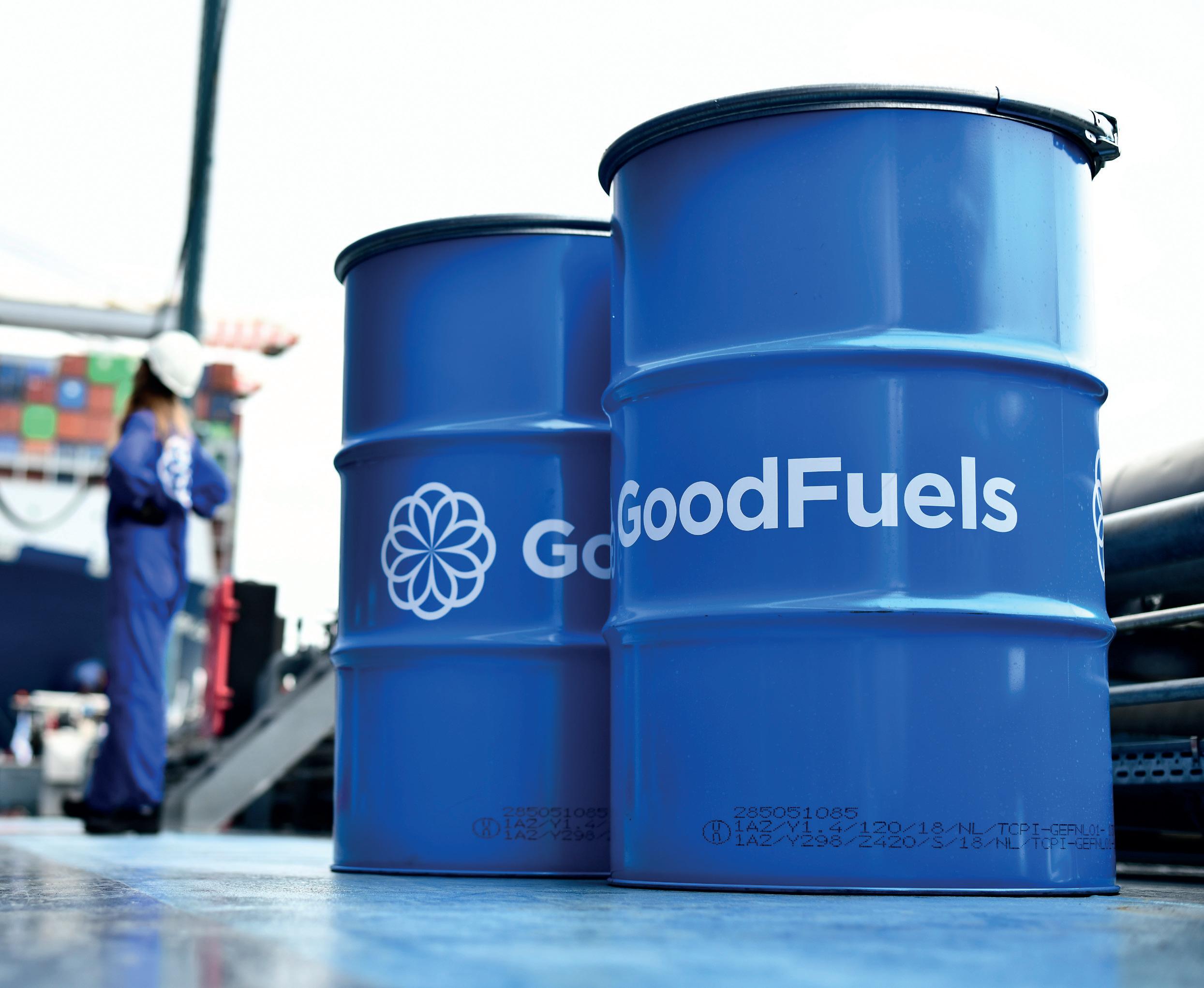
4 minute read
Hydrothermal liquefaction for sewage sludge valorization
Alex Gorodetsky, Ling Li, Steeper Energy Canada Ltd
Steeper Energy’s proprietary HTL process can transform urban sourced bio-organic wastes into advanced biofuels
Advertisement
Europe is facing major challenges in balancing its future energy needs and reaching the targets of 10% renewables in transport fuels by 2020, and a total of 27% penetration across energy sectors by 2030. At the same time, increasing residual mass flows from society are challenging Europe’s ability to design sustainable and circular approaches for valorization of organic as well as inorganic components. Increasing the use of bio-based products in the European economy is a strong focus, and an important aspect is the conversion of biomass into ‘advanced biofuels’ that significantly contribute to reducing the greenhouse gases (GHG) by more than 60% as required by the RED II. The transportation sector is especially challenged in the European Energy Roadmap 2050, by an 80% reduction of GHG emissions compared to 1990, but with the
Biocrude oil obtained from Steeper Energy’s proprietary HTL process. Source: Steeper Energy.

contribution of first-generation biofuels currently capped at 7% and with a possible reduction to 3.8%. The EU Strategy for Low-Emission Mobility calls for the speed-up of deployment of alternative energy vectors for transport, with a specific focus on biofuels. The NextGenRoadFuels partnership will provide significant technological advancements within the entire value chain from various, low-value biogenic wastes through efficient and sustainable processing to drop-in quality synthetic gasoline and diesel fuels, in order to facilitate strategic decision making for, and implementation of, a future European energy infrastructure. This is a multi-disciplinary, panEuropean effort reflected in the NextGenRoadFuels consortium,

joining academia and research, industry and SMEs in a common effort.
HYDROFACTION ® : HARNESSING THE UNIQUE CHEMISTRY OF SUPERCRITICAL WATER
The core technology behind this initiative is Hydrofaction® - Steeper Energy’s proprietary hydrothermal liquefaction (HTL) process, which can efficiently transform urban sourced bio-organic wastes into advanced biofuels with the added environmental and social benefits of destroying micro-plastics, pharmaceuticals, and endocrine disruptors as well as isolating heavy metals, phosphorous and nitrogen, making them available for other higher-value uses. Hydrofaction® harnesses the unique chemistry of supercritical water and delivers low-oxygenated biocrude oil at high biomass-to-oil yields, and ultimately into drop-in biofuels. Unlike traditional HTL process conditions, Hydrofaction® is a conversion pathway under supercritical water conditions. In this condition, water becomes a solvent to oil as well as simultaneously producing alkali and acidic conditions, among other properties. Thus, it allows for the efficient de-oxygenation of bio-organic molecules and production with higher yields when compared to other HTL technologies.
SEWAGE SLUDGE FROM WASTE TO FEEDSTOCK
The overall market focus of NextgenRoadfuels Project includes sewage sludge and municipally aggregated biowaste. The amount of both sewage sludge and municipal organic waste is considerable, while the later one has a higher volume. However, the disposal cost of sewage sludge is significantly higher than municipal waste. Therefore, considering the ability of HTL to efficiently process wet materials, an initial focus on sewage sludge has been chosen for market entry. Currently, sewage sludge disposal methods include incineration, land spreading (for agriculture use), compost, and landfill. The jurisdictions that focus on landfill or land spreading of sewage sludge may be a more accessible initial entry point for HTL as significant capital has not yet been deployed on sludge incineration or composting infrastructure. As shown in Fig. 1, many countries in the EU fit this description. Additionally, it has been determined that smaller urban centres may be preferable, rather than larger centres with longer planning horizons.
DEVELOPING A GO-TOMARKET STRATEGY FOR HTL IN THE WASTE MANAGEMENT SECTOR
A series of interviews with waste industry executives and operators
Figure 1 - Sewage Sludge Disposal by Country (Eurostat, 2017)

have been conducted to advance the understanding of the Go-to-Market strategy for HTL entering the waste management industry. Industry feedback indicates that the urban waste market is extremely conservative and bringing a new technology into the market can be challenging and time consuming. Projects within the sector are governed by the EU tendering process and necessitate the need for EPC (Engineering, Procurement and Construction company) participation in providing completion and performance guarantees to which municipalities are accustomed. Land spreading of sewage sludge conforms with the Sewage Sludge Directive. This directive is old legislation that regulates the use of sewage sludge in agriculture and sets limits for concentrations of heavy metals in soil (EIONET). Significant disagreement exists on whether land spreading should continue, and therefore the directive is unlikely to be altered. It is the view of one industry association that all routes of sewage sludge disposal must remain open. However, a trend is emerging in decreased usage of land-spreading. Germany has taken the lead, and Sweden, Norway, and Finland are following suit by not allowing landspreading. This trend provides an opportunity for HTL penetration into the wastewater treatment market.
The following market drivers were identified through our research:
• 60% of global sludge disposal is either incinerated or landfilled costing € 11.2 B per year in EU and € 142 B globally for wastewater treatment plants (UN-HABITAT, 2008)
• The global sewage treatment plants market is forecast to grow at a positive CAGR (Compound Annual Growth Rate) of 9% during 2016 - 2021 to reach € 154 B by 2021, due to increasing population and emerging stringent regulations (Azoth Analytics , 2016)
• Changing trends and new government legislations regarding resource usage, the European sewage sludge market will move towards mono-incineration
• If traditional sewage sludge disposal solutions in EU are replaced by incineration, the additional cost would approximately € 650 million per year [source: interviewee feedback].
This project has received funding from the European Union’s Horizon 2020 Research and Innovation Programme under Grant Agreement No. 818413










